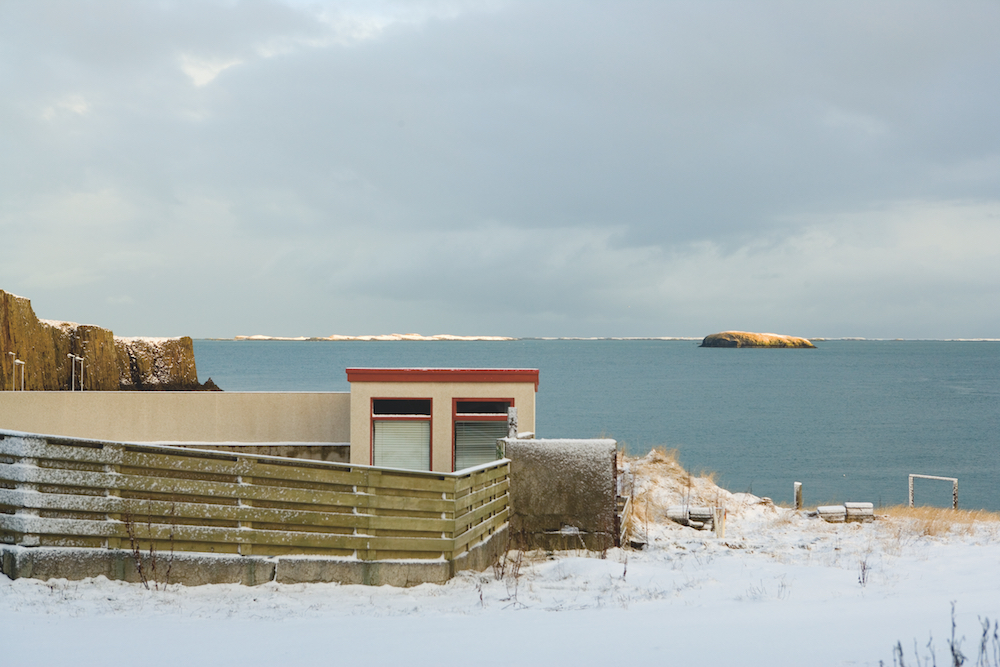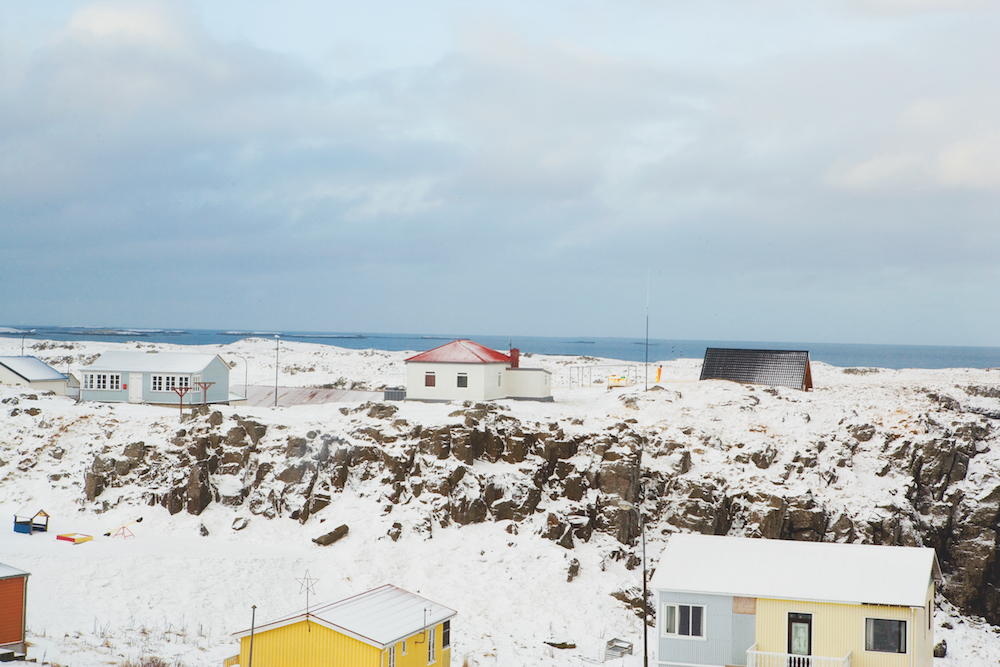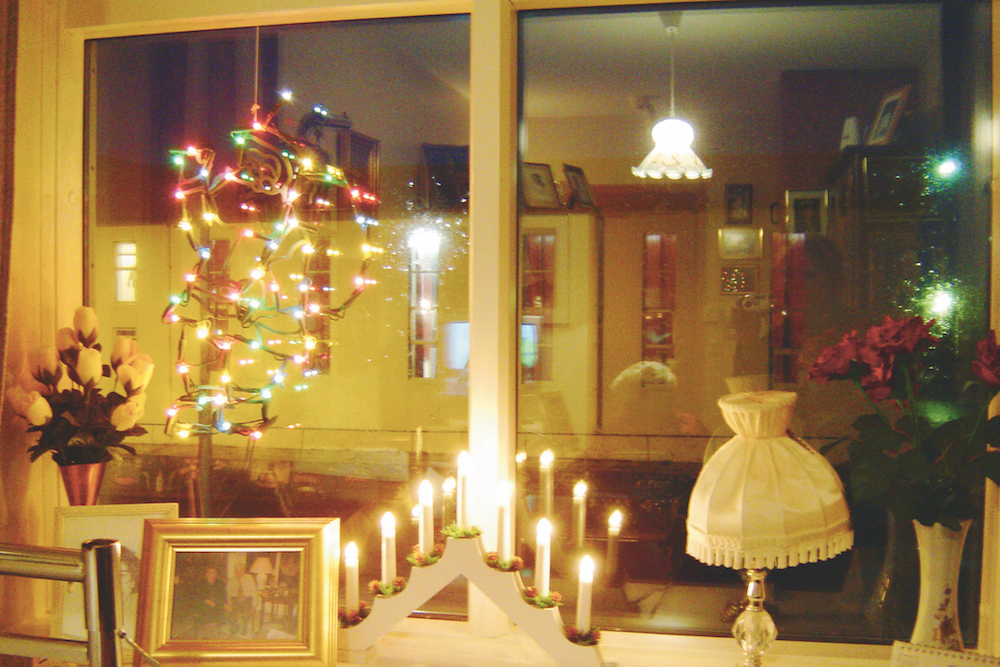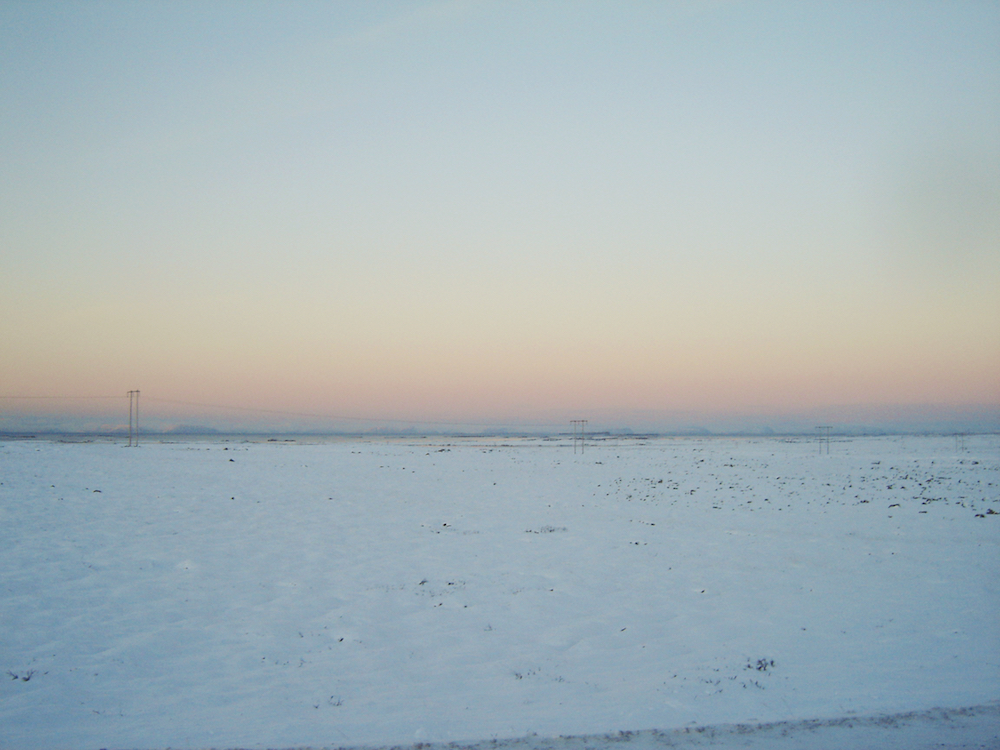The American artist Roni Horn first visited Iceland in 1975, when she was nineteen. Since that initial journey, she has returned to the island nation, both in person and through art, time and again; she has described Iceland as “a force, a force that had taken possession of me.” Island Zombie: Iceland Writings, which will be published this week by Princeton University Press, collects vignettes and photographs from Horn’s ongoing fascination with the country. An excerpt appears below.
I don’t want to read. I don’t want to write. I don’t want to do anything but be here. Doing something will take me away from being here. I want to make being here enough. Maybe it’s already enough. I won’t have to invent enough. I’ll be here and I won’t do anything and this place will be here, and I won’t do anything to it. And maybe because I’m here and because the me in what’s here makes what’s here different, maybe that will be enough, maybe that will be what I’m after.
But I’m not sure. I’m not sure I’ll be able to perceive the difference. How will I perceive it? I need to find a way to make myself absolutely not here but still be able to be here to know the difference. I need to experience the difference between being here and not changing here, and being here and changing here.
I set up camp early for the night. It’s a beautiful, unlikely evening after a long rainy day. I put my tent down in an El Greco landscape: the velvet greens, the mottled purples, the rocky stubble.
But El Greco changes here, he makes being here not enough. I am here and I can’t be here without El Greco. I just can’t leave here alone.
*
A sunny blue morning and I’m looking for a place to rest. On the map there’s a beach not far ahead. I leave the road and drive across a grassy field and soon I’m on a red-sand beach. The tide is out, the ocean far away. I get off the bike and wander down the shore. It’s windy and cold, but the sun is warm in a cloudless sky. The arctic terns are about, they screech and hover and swoop down at my head.
I lie down on the sand; near the earth the wind is still. I fall into a deep, brief sleep. Through my eyelids the bright light of the sun saturates my body. As though from outside, I see myself translucent and feathered red to orange at the edges of my silhouette, a science fiction. I dream of my body inanimate, prone, giving up its opacity.
As I wake I feel a weight on my chest. And there, as my eyes slowly open, is a large brown bird perched on my stomach. It casts a shadow over my face. I lift my head as the bird takes a peck at my chest and wonder is this in life or in death? I panic and the bird spreads its wings, digging its perch in a little deeper as it takes off.
*
There are no reptiles here. No snakes, no crocodiles or alligators. No lizards, turtles, or frogs. No mammals that could hurt you, either. The people are rarely criminal and only occasionally violent, and almost never toward a stranger. There are no serial murderers here, maybe a few crimes of passion here and there, but no decapitated women or otherwise mutilated bodies. Essentially there is no violence. No irrational threats. No intimidating predators. No cold-blooded animals. All the things that aren’t here resolve what is. Relief from fear is freedom.
But there’s something else here: the weather. The weather is here instead—a Freudian slip of ecology. As though weather was wittily and mercilessly substituted for reptiles. Weather, a natural force magnified by island circumstance, is the cold blood of Iceland. Weather with its amoral, wanton violence is lethal here.
Weather moves rivers and makes them, too. Weather blows roads away or turns them into mud. It washes the rocks out of the mountains and dams the roads. The weather is one thing here and fifty feet away something else. Cars are blown off roads, frequently in some places, and people are picked up or knocked down by sudden gusts. In the interior, near the glacier for example, the winds can get so bad you must crawl on the ground to get through. Sandstorms stop visibility a foot in front of your face; this is a way of being lost without having gone anywhere. When the glaciers begin to melt the earth trembles at the gushing vehemence of engorged rivers. Water is thrashed out of the ocean and thrown in the air, whole fields of water are blown out of lakes. Waterfalls are smashed into fine spray and blown back up into the clouds.
Changing weather can strand you quickly. Just around the bend a whiteout might erase the world entirely. Sometimes briefly, sometimes not. Rivers can turn into lakes, and so can fields. When a field becomes a lake it’s intimidating just standing near. These instant lakes have properties unpredictable and unmapped. Encountering these new bodies of water presents a unique form of being lost. You are lost not because you don’t know where you are but because where you are is not what it is.
*
I’d been living on the bluff only three weeks when I ran out of reading material. I searched the lighthouse for possibilities. Up in the tower I found the repair manual for the electric generator (good over breakfast, but not more) and True Life, Unsolved English Murder Mysteries. It would be hard not to read the mysteries, I thought. I spent the better part of the evening resisting. But then … I succumbed—hideous, detailed descriptions of wives cut into pieces and sent around town or stashed under bridges by their husbands, often doctors.
In the room overlooking the bluff, I sat and read. The mood was intensified by the thick fog that was presently enveloping the bluff and obscuring the view. I was dreading the moment I would finish. My only option, I knew, was to keep reading and rereading, and just not stop.
Though I lingered purposefully over each criminal act, savoring the occasional and extraordinary detail, I finished quickly. These terrible images—headless women, body parts washed up on the Thames, disemboweled torsos—populated the bluff. The lighthouse diminished in size, a claustrophobic energy entered the building.
I sat still, very still, listening to the late-night silence of the room. It was loud and tiring. I waited for a break, a way out, a pause in the feeling of terror that filled me. It came quickly when the electricity shut down and the building went dark. Seconds later the electric generator exploded into action, a twisted parody of my fear and helplessness. It was unbearably loud and intense. I laughed and laughed and then I froze. My muscles strained with immobility.
I sat in the dismal bare-bulb light staring into the darkness, into my reflection in the glass. Intermittent bursts of white swept past the window and over the bluff, racing around the room and washing over my face.
*
I’m standing on the mountain Kerlingarfjöll, high up in the interior of Iceland. A warm, sunbaked evening fills the air. The atmosphere is a lens, focusing the view into vivid and stunning clarity. The air is thin and transparent, so much so, it feels new. Things far away are as visible as those that are near. There’s little distinction between the two.
Looking around I can see the ocean way out there, in all directions. With a sense of omnipotence, I can also see everything in between. No haze, no dirt, no trees, nothing obscures the view. I am seeing all that is visible in each direction, as far as that direction goes. Only the curvature of the earth diminishes and eventually removes the most distant part of each view.
To the east the view is briefly interrupted by the mountain I’m standing on. But every little thing on the mountain stands out in magnified clarity too. The blades of grass, the grains of sand, the perfect pebbles, each rock, and every flower, and every part of every flower are brilliantly visible. I can see the smooth, rough, and granulated textures of all things: the earth, vegetation, and rocks. I see this simultaneously and without hierarchy. Every road, lava field, lake, and river, every glacier, mountain, boulder, and bridge, each holds its place in the view.
Provided it’s the right arctic atmosphere, you can stand almost anywhere on this island, not necessarily high up, and experience these deep views. The terrain is an ocean of expanse; an expanse interrupted only occasionally by a mountain or a glacier. And only rarely do buildings or vegetation interfere, and trees never do.
There are no trees in Iceland. Their absence brings out the remarkable nature of this landscape. The views here are the trees of Iceland. In other places no trees creates a vacuum, obscuring the view with longing and desire.
Iceland is young; some of the island is less than thirty years old. Surtsey was cooling its molten mass into the Atlantic Ocean within months of John F. Kennedy’s assassination in 1963. Iceland’s so young erosion hasn’t yet obscured the origin of things.
Youth and no trees reveal things rarely seen anywhere. Like how a place comes to be, continuously.
How the landscape takes shape.
How the lava flows and where it stops. And how many times it flows here or there, because each flow is a layer, looking like a single step in a staircase.
How these layers and steps now laminated into a solid mass tilt this way or that.
How the water emerges from underneath a lava field and forms a wall of waterfalls.
How the earth splits open in a miles-long, straight, v-shaped canyon.
How molten lava rides the rivers out to sea.
How boiling water spontaneously jumps out of the earth.
How basalt cools into accordion walls of architectural clarity and scale.
How lava flows over wet earth and becomes a field of breasts and cones that together create an undulating and sexy horizon.
How fjord mountains stop happening way up in the air like the blades of upturned knives and how these sharp mountains form a row of pinnacles like the teeth of a comb.
How a lava flow becomes a maze.
How a mountain breaks down into particles that settle into vast slopes in dazzling angles of repose.
How, precisely, tectonic plates—enormous pieces of global crust, come together exactly as one might expect the edges of some enormous crack to do.
The hows build up everywhere, forming a landscape of infinite depth and transparence. Each how takes you one step deeper, beyond appearance, beyond the simple visibility of things.
No trees. No trees introduces something as complex and necessary as trees themselves. But when this absence combines with the right atmospheric conditions, Iceland grants omniscience to the visitor free of superior forms.
Roni Horn is an artist and writer whose books include Another Water, Wonderwater (Alice Offshore), Weather Reports You, and Roni Horn aka Roni Horn.
Excerpted from Island Zombie: Iceland Writings, by Roni Horn. Copyright © 2020 by Roni Horn. Reprinted by permission of Princeton University Press.
from The Paris Review https://ift.tt/3mq8wqW





Comments
Post a Comment